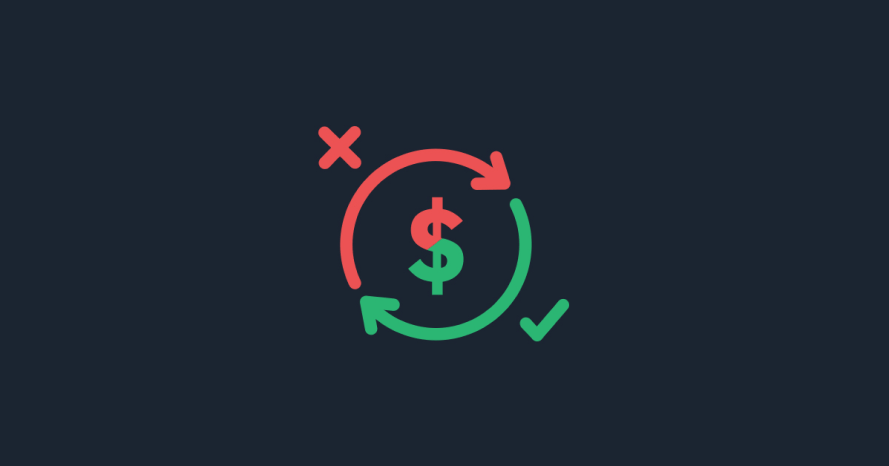Previously, we've talked about what Chargeback is, who participates in it, and why you can get a refund. Now we're going to give you a step-by-step guide to help you successfully complete the Chargeback process. Our practical observations show that if you follow these instructions carefully, you are much more likely to get a refund.

1. No more than 540 days have passed (for Visa and MasterCard);
2. Payment
was made by bank card on the company website;
3. The description of the payment specifies the
receiving company (not necessarily the same name as on the site).
Preparatory stage: We consider
this stage to be the most important. You will need to gather as much information as possible to make a
claim. After all, you have been the victim of a company that is professionally deceiving people and
storing stolen funds overseas. You should prepare thoroughly. For this you will need:
1. Your
passport information;your card number;
2. A bank statement for the period in which the company made
the payment;
3. Correspondence with the company's employees;
4. The contract and other
documents that you signed with the company;
5. Screenshots from the official website showing the
services or goods promised by the company.
The official policy of all payment systems is the same: before starting the
Chargeback procedure you should try to settle the situation with the seller. Only if the seller refuses
or ignores you, you can start the procedure to dispute the payment. This makes sense. First, it helps
reduce the number of complaints to the banks. Secondly, the broker company itself in some cases (at its
own initiative) can return the funds after your request.
The application can be drawn up in free
form and sent by e-mail specified in the contract or on the company's website.
1. Almost all banks offer to fill out a standard application form to dispute
transactions. This form specifies basic information about the cardholder, the merchant, and describes
the situation. This form is convenient for bank specialists, but not always beneficial for the initiator
of the chargeback. The bank will accept your application according to the template and send it to the
acquirer, but a reply from the respondent company can make the situation worse and strengthen its
position in the dispute.
2. Payment systems have developed codes to process information promptly.
Be sure to familiarize yourself with them in the article "Chargeback Codes". Based on your
payment system and situation, choose the most appropriate code for you. We also provide recommendations
in that article. It's a good idea to carefully examine the company's promises and compare them
to actual performance. Note which obligations have not been fulfilled, and collect the evidence base for
drawing up a statement about the disputed transaction.Important! The statement should be drafted
consistently: give a brief description, state clear requirements and refrain from emotions.
The bank will register your complaint, assign a number to it, and make a decision
within 15-60 days, depending on the workload of the claims department. The response may be as
follows:
1. Requesting more information. The bank is not satisfied with something (e.g. poor
quality of screenshots, weak evidence, insufficient information).
2. Denial of Chargeback
procedure. Reasons can be different: non-compliance with payment systems rules, missed deadlines, low
return probability according to the bank, error of the bank specialist.
3. Extended deadlines.
This means that your claim is still being processed and, in most cases, Chargeback has been initiated
and the documents have been sent to the acquiring bank of the selling company.
4. Documents from
the company. You should read the response and prepare a reasoned rebuttal of the evidence provided by
the company.
5. Chargeback. You can reapply to dispute the full amount, but the likelihood of
success is low.6. A full refund.
In Visa payment system this stage is called Pre-arbitration, and in MasterCard system it is called the second Chargeback. It is when one of the parties does not agree with the results of the first Chargeback. Not all banks support the second Chargeback, but it is the first step to be fair. It takes new evidence or a change in strategy for a bank to launch a Pre-arbitration or second Chargeback. There are already successful precedents at this stage, so it's worth the effort.
If a payment system participant does not agree with the results of preliminary
arbitration from another participant, it may submit a request for arbitration, in which the payment
system operator acts as an arbitrator.
During the arbitration procedure the payment system
operator decides which party is responsible for the disputed transaction. The arbitration decision is
final. During the arbitration the commission of arbitration and dispute resolution checks all documents
and data, provided to both parties of the payment system.
The losing party has to pay a fee for
arbitration to the operator of the payment system (from $250 to $500 for each transaction). Therefore,
you should act only if you are sure that your facts are in favor and if you are ready to pay the
arbitration fee in case of defeat. Carefully weigh all your arguments and take action.